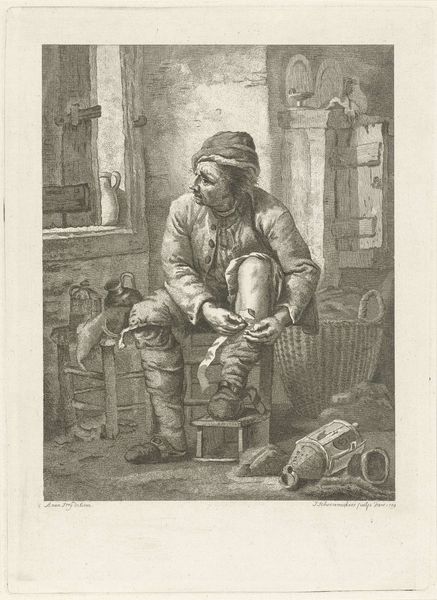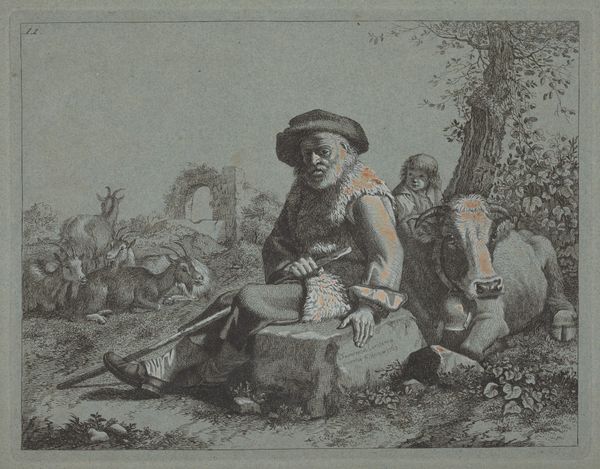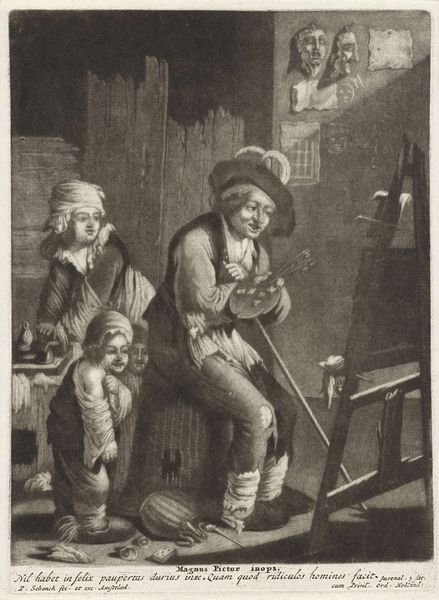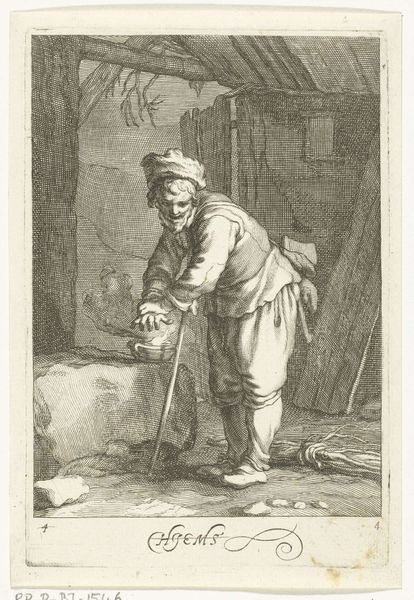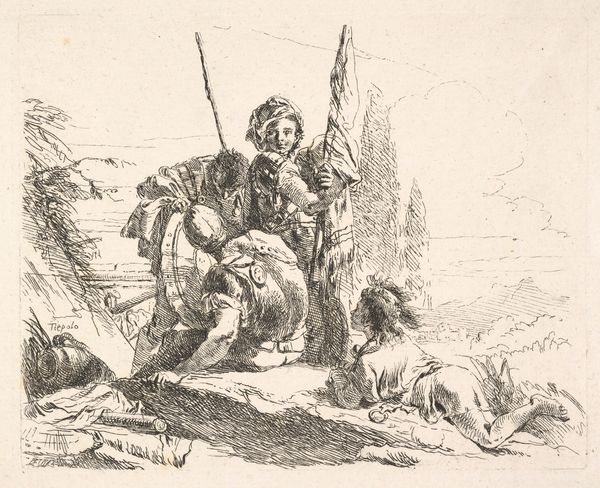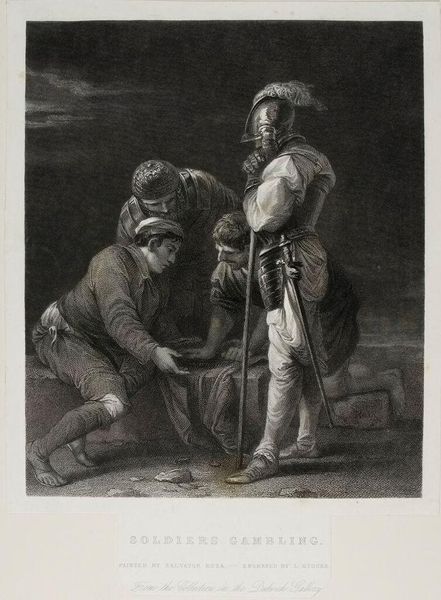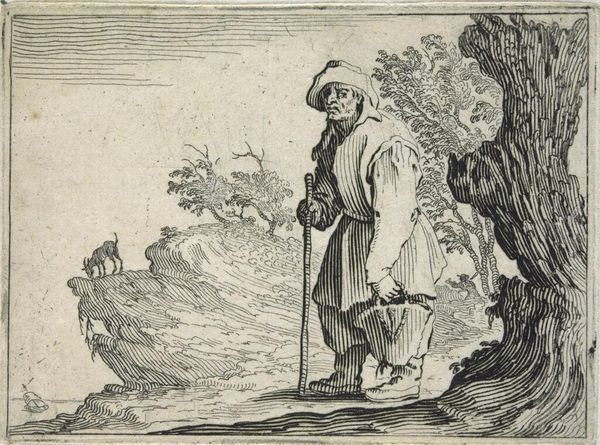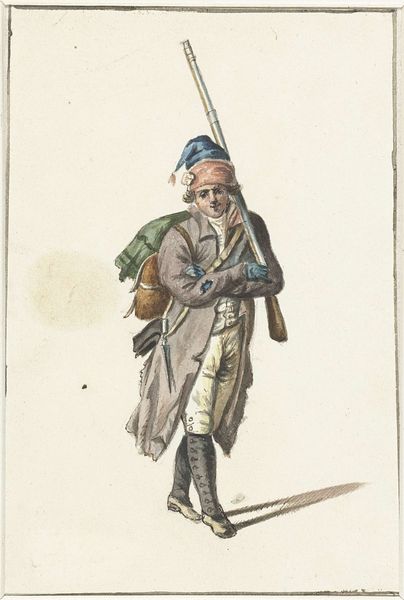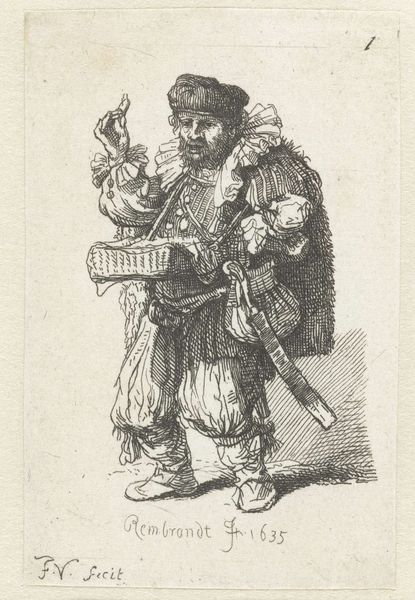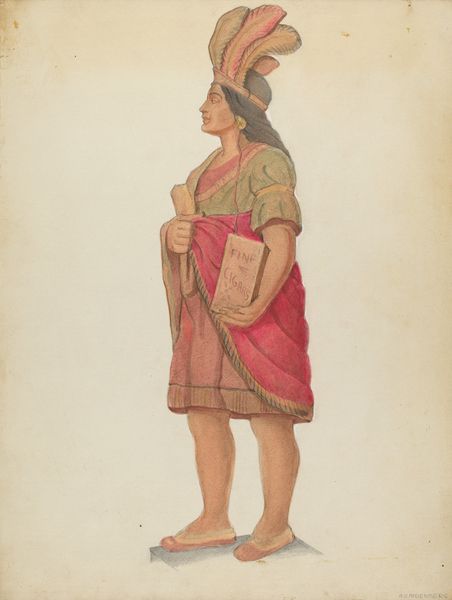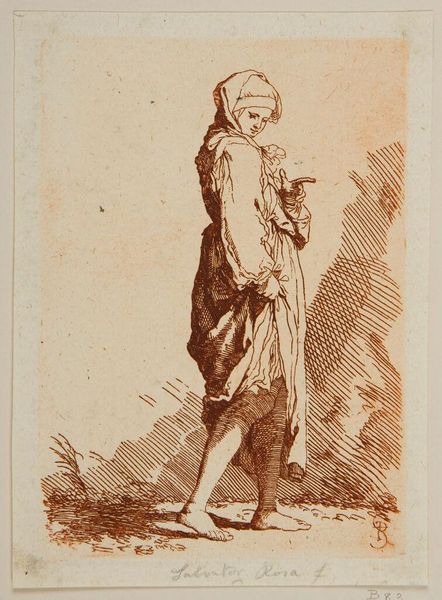
painting, oil-paint
portrait
figurative
painting
oil-paint
orientalism
genre-painting
history-painting
academic-art
realism
Copyright: Public Domain: Artvee
Editor: So this is *A Bashi-Bazouk And His Dog*, an oil painting by Jean-Léon Gérôme. It’s a very striking image. The detail in the Bashi-Bazouk's garments and weaponry really catches the eye. What cultural stories can you unravel from the imagery in this piece? Curator: Notice how the dog mirrors the stance and direct gaze of the Bashi-Bazouk. The dog symbolizes loyalty and vigilance, reflecting on the Bashi-Bazouk’s own role as a soldier. The weaponry and elaborate dress serve as symbols of power, status, and cultural identity within the Ottoman Empire, a calculated performance for the Western gaze. What emotional undertones does this theatrical presentation evoke in you? Editor: I see a tension between a proud display of cultural identity and perhaps a slight unease, knowing it's presented for an external audience, it feels staged, but masterfully so. Does that tension play into how we should interpret this type of "Orientalist" artwork? Curator: Absolutely. The 'staging' becomes the core message. It exposes not just the Bashi-Bazouk’s cultural identity, but also the Western fascination with – and potential misinterpretation of – such ‘exotic’ subjects. Gerome prompts us to question what we project onto these images, how we participate in shaping the cultural narrative through our perception. This image carries multiple cultural layers for viewers to decode, a rich repository of identity. Editor: I didn’t consider the element of Western projection as much, very interesting perspective to consider here. Curator: Exactly! Each detail here carries coded meanings influenced by cultural exchange.
Comments
No comments
Be the first to comment and join the conversation on the ultimate creative platform.
